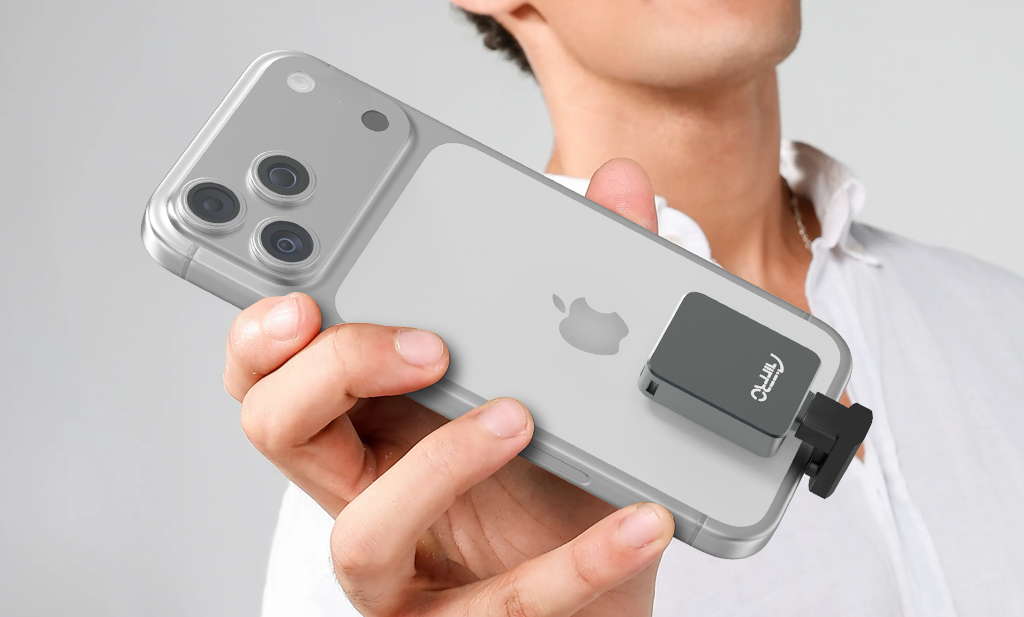What Is a Dual-Interface SSD? A Clear Guide for Creators and Travelers
The Rise of Dual-Interface SSDs
As more creators, travelers, and everyday users juggle multiple devices like phones, tablets, laptops, and cameras, the need for flexible, fast external storage has grown rapidly. Traditional drives still struggle with compatibility, making people carry extra adapters and cables just to move simple files. That's why dual-interface SSDs are getting more popular: they're tiny storage solutions built for convenience across different devices.
Dual-interface SSDs pack portability and high-speed performance into one device, making it easy to handle 4K videos, RAW photos, work files, and everyday documents. Whether you’re editing video on a laptop or backing up photos directly from your phone, these drives make transfer faster and simpler.
What Dual-Interface Really Means
A dual-interface SSD has two physical connectors: Lightning and USB-C. This design allows one portable SSD to work seamlessly with both older devices and the latest tech setup, no dongle or extra cable needed. By supporting both ports natively, users can avoid compatibility headaches and enjoy a smoother workflow wherever they go.
Why Dual-Interface Matters for Creators and Everyday Users
If you often transfer files between devices, a dual-interface SSD makes the whole process smoother and frustration-free. Creators using mixed ecosystems, like using a tablet on the go and a laptop in the studio, benefit from the universal connectivity. Everyday users dig how simple it is to have one device that works with everything they own.
Dual interfaces also offer flexibility in unpredictable situations. Borrowing a friend’s laptop, using a public computer, or switching between old and new gear becomes effortless. No extra gear, no setup. Just plug in the right connector and start transferring.
Another major advantage of a dual-interface SSD is its ability to deliver high-speed, consistent performance across all your devices. Whether you're transferring high-resolution images, large video files, or important work documents, the speed beats traditional hard drives or cloud uploads by a mile.
This is especially helpful when moving data between:
- Smartphones and laptops
- Cameras and tablets
- Desktop computers and mobile devices
Fast transfers mean smoother editing, quicker backups, and less waiting, so creators get more time to actually create.

Real-World Use Cases
Dual-interface SSDs prove their value most clearly in daily use. Their versatility supports creators who switch devices often and travelers needing quick storage on the move. They also help mobile filmmakers, students, and everyday users who want reliable, universal external storage without carrying multiple drives.
Whether you're offloading 4K footage in the field or boosting mobile storage during trips, these drives allow for a flexible workflow regardless of where you are or what device you’re using.
Photographers, for example, often move between a camera, a phone for quick previews, and a laptop for editing. A dual-interface SSD makes it easy to:
- Back up RAW files directly after a shoot
- Review assets on a tablet without delay
- Share selected images quickly through a laptop or phone
Since it plugs into either Lightning or USB-C, you don't need extra adapters when switching environments. This is ideal for fieldwork, travel shoots, and fast-paced creative sessions.

Where the Aiffro P20 Mini SSD Fits In
The Aiffro P20 Mini SSD fits perfectly into today’s multi-device lifestyle. Designed for creators, travelers, and everyday users, it offers dual-interface convenience in a lightweight, pocket-sized form. Instead of juggling multiple drives or cables, the P20 Mini SSD lets users plug in and start transferring instantly, whether you're using a modern USB-C phone or an older USB-A laptop.
Its tiny size (32 x 48 x 5mm) and ultra-lightweight (just 14g) make it easy to carry anywhere, from a camera bag to a daily backpack even in your pocket, while still providing fast, stable storage for high-resolution content. If you switch between devices often, the P20’s compact size and steady performance keep your workflow smooth without adding any bulk.
The Aiffro P20 Mini SSD stands out for several reasons that fit the needs of creators and everyday users:
- Dual-interface (Lightning + USB-C) for universal compatibility
- Up to 1,000 MB/s sequential read/write speeds, ideal for 4K video, RAW photo files and large project assets
- Ultra-portable, lightweight aluminum build, designed for on-the-go workflows
- Plug-and-play usage across laptops, phones, tablets, cameras and desktops, no drivers required.
- Durable enough for field use and travel environments
All these features work together to give you a flexible workflow, making your creative life smoother and more efficient. If you're into the P20 Mini SSD, you can learn more about Aiffro.com.)
The Future Standard for Portable Storage
Dual-interface SSDs are quickly becoming the preferred choice for users who depend on fast, reliable, and versatile storage. They work seamlessly with both older and newer devices and eliminate barrier especially for creators who need mobility and efficiency, so you can get a smoother digital experience.
As our devices keep evolving, drives like the Aiffro P20 Mini SSD show how smart design and flexible connectivity can keep up with modern workflows. Dual-interface storage isn’t just convenient. It’s shaping the new standard for portable, multi-device file management.




Laisser un commentaire
Ce site est protégé par hCaptcha, et la Politique de confidentialité et les Conditions de service de hCaptcha s’appliquent.